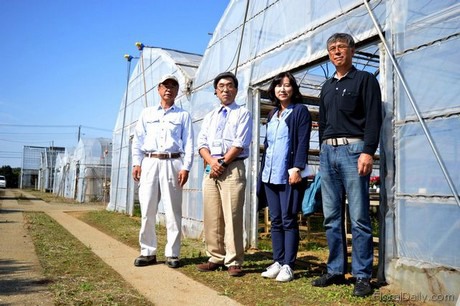
During the IFEX in Japan, we had the opportunity to visit Ito greenhouse. In the picture: Hideniko Ito of Ito greenhouse, Shoichi Oshio of FloralCrest Japan is a grower of Impatiens and Cyclamen. Lee Gee Young of Gyeonggi Agricultural Research and Extension, a breeder of Cactus in Korea and Hong Chul of Hong Yi Green House, an ornamental grower in Korea.
High prices for gift items
Cyclamen are popular plants in Japan and therefore a popular plant to grow. Ito supplies the cyclamen to the auction and to the direct market in Japan. "The 9cm and 15 cm pots are both supplied to the auction and the 18cm and 20 cm pots, which are used as end of the year gift items are sold directly. At the auction, the 9 cm pots are around 150 yen and 400 yen in the grower shops. The 15 cm pots, the average size in Japan, is about 700 yen at the auction and in garden centers around 1,400 yen. The 18cm and 20 cm pots receive a higher price as they are categorized as 'gift items'," he explains. According to Ito, these cyclamen need to be more expensive as they are gift items, something special. "For a 18 cm pot, around 3,000 yen is paid and a 20 cm pot, is around 4,000 yen."
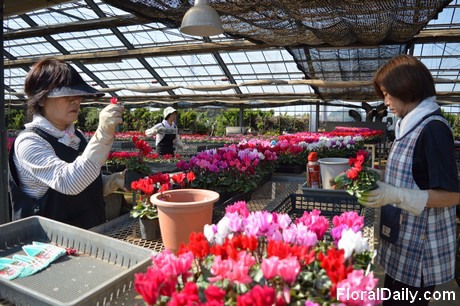
Workers preparing the cyclamen for shipping.
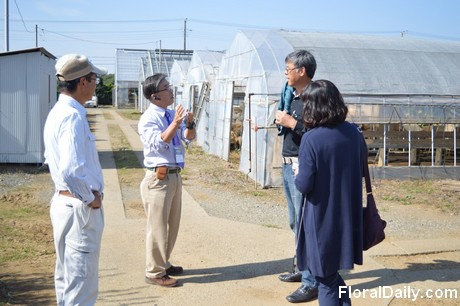
Shoichi Oshio translated the story of Hideniko Ito from Japanese to English
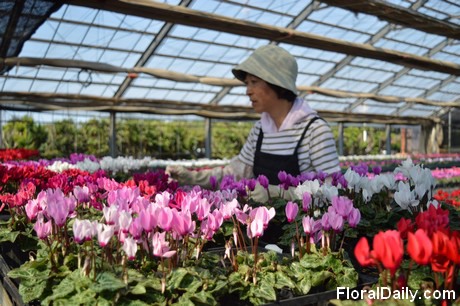
Workers preparing the cyclamen for shipping.
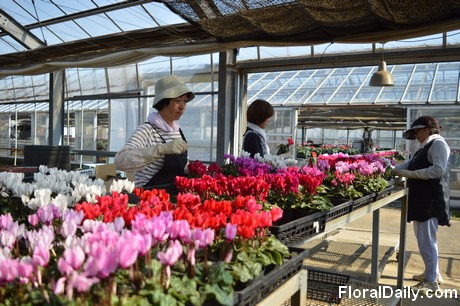
Workers preparing the cyclamen for shipping.
Plastic and glass greenhouses
The cyclamen are grown in plastic and glass greenhouses. According to Ito, the reason why both greenhouses are used is only because of economical reasons. "When we started, glasshouses were popular and affordable. Over the years, the prices of the glasshouses increased drastically. Therefore, we've chosen for a greenhouse covered with polyolefin film; a type of plastic invented in Japan. It is strong, it can last 5 to 7 years and does not get dark like vinyl," explains Ito. On the greenhouse and inside the greenhouse some techniques are used. The screens and the top windows in the greenhouse work automatically. Besides that, additional heating is necessary because of the heavy seasons; in the winter it can freeze. The cyclamen are grown in a so called C-channel type gutter. "Some growers use irrigation mats, but we have chosen for this way of growing. We put the pots on a sponge, which absorbs the water and irrigation to the cyclamen in that way."
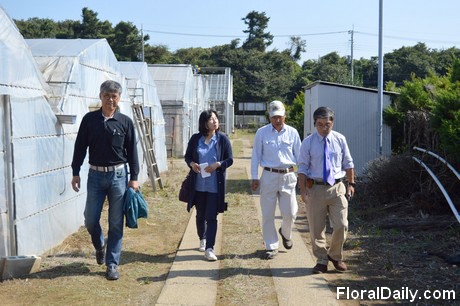
Walking around the farm.
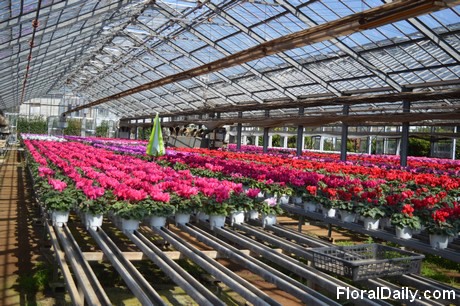
Greenhouse filled with cyclamen.
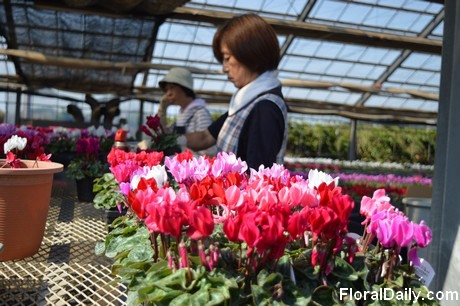
Workers preparing the cyclamen for shipping.
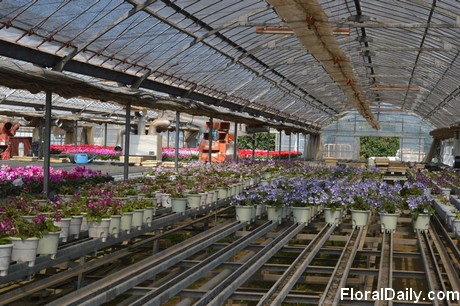
There are already some new guinea impatiens in the Greenhouse.
Will it be taken over?
Next season, Ito will start growing his other crop, the new guinea impatiens. From mid-November till the end of February, these perennials are grown in the greenhouse and are being shipped from March till May. In June, the cyclamen cultivation starts again. Ito is enjoying his business a lot, but he has to take a look at the future. Like many farms in Japan, Ito Greenhouse is a family business. So, when Ito retires, his son has to take over the business. However, just like the predicted trend in Japan that the domestic supply will decrease as the businesses are not taken over by the next generation, also Ito's son is not sure if he wants to take over the business. Till that time, Ito will keep enjoying the business and keep growing.
For more information
Ito Greenhouse
Hidehiko Ito
